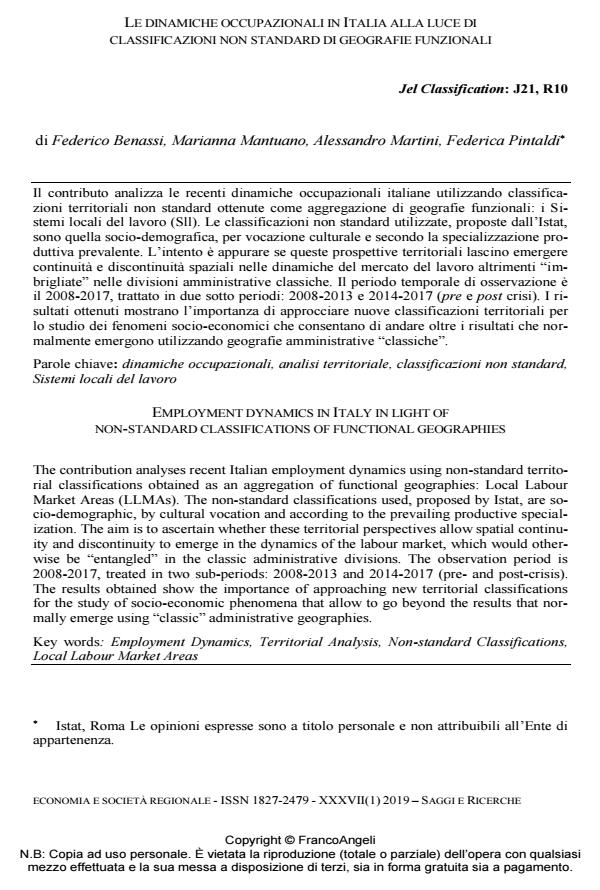Employment dynamics in italy in light of non-standard classifications of functional geographies
Journal title ECONOMIA E SOCIETÀ REGIONALE
Author/s Federico Benassi, Marianna Mantuano, Alessandro Martini, Federica Pintaldi
Publishing Year 2019 Issue 2019/1
Language Italian Pages 20 P. 121-140 File size 470 KB
DOI 10.3280/ES2019-001009
DOI is like a bar code for intellectual property: to have more infomation
click here
Below, you can see the article first page
If you want to buy this article in PDF format, you can do it, following the instructions to buy download credits

FrancoAngeli is member of Publishers International Linking Association, Inc (PILA), a not-for-profit association which run the CrossRef service enabling links to and from online scholarly content.
The contribution analyses recent Italian employment dynamics using non-standard territorial classifications obtained as an aggregation of functional geographies: Local Labour Market Areas (LLMAs). The non-standard classifications used, proposed by Istat, are socio- demographic, by cultural vocation and according to the prevailing productive specialization. The aim is to ascertain whether these territorial perspectives allow spatial continuity and discontinuity to emerge in the dynamics of the labour market, which would otherwise be "entangled" in the classic administrative divisions. The observation period is 2008-2017, treated in two sub-periods: 2008-2013 and 2014-2017 (pre- and post-crisis). The results obtained show the importance of approaching new territorial classifications for the study of socio-economic phenomena that allow to go beyond the results that normally emerge using "classic" administrative geographies.
Keywords: Employment Dynamics, Territorial Analysis, Non-standard Classifications, Local Labour Market Areas
Jel codes: J21, R10
- Computational Science and Its Applications – ICCSA 2020 Ginevra Balletto, Luigi Mundula, Alessandra Milesi, Mara Ladu, pp.441 (ISBN:978-3-030-58819-9)
- Innovation in Urban and Regional Planning Ginevra Balletto, Luigi Mundula, Alessandra Milesi, Mara Ladu, pp.329 (ISBN:978-3-030-68823-3)
Federico Benassi, Marianna Mantuano, Alessandro Martini, Federica Pintaldi, Le dinamiche occupazionali in italia alla luce di classificazioni non standard di geografie funzionali in "ECONOMIA E SOCIETÀ REGIONALE " 1/2019, pp 121-140, DOI: 10.3280/ES2019-001009